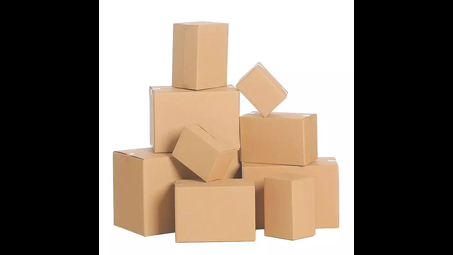what are the components of Eco-Friendly boxes what makes a box biodegradable and what are its good impact on environment?
Eco Friendly Boxes will in general dominate in the market by legitimizing their recognizable characteristics. This bundling is produced using recyclable material like card stock, Kraft stock, bux board stock, and layered E-woodwind that is utilized generally because of its solidness and strength.
This bundling is liberated from any colors and dyes and represents no dangers to the climate. It comes in different sizes, styles, and shapes to suit the item idea of each kind. It very well may be tweaked with additional items like PVC sheets, foil stepping, window cuttings, decorating, debossing, and hole.

What else can I help you with?
Are soaps and detergents biodegradable?
Most conventional soaps and detergents are biodegradable, as they break down into simpler compounds in the environment. However, some detergents may contain non-biodegradable or poorly biodegradable ingredients that can accumulate and persist in the environment. It is important to choose eco-friendly and biodegradable options to minimize environmental impact.
Is aluminium biodegradable or non biodegradable?
Aluminum is non-biodegradable, meaning it does not break down naturally in the environment. However, it can be recycled and reused multiple times, which helps reduce the impact of its production on the environment.
Does Non biodegradable materials not break down.?
Non-biodegradable materials do not break down easily in the environment like biodegradable materials do. It can take hundreds or even thousands of years for non-biodegradable materials to decompose, leading to long-lasting pollution and harm to the ecosystem. Recycling and proper disposal of non-biodegradable materials are crucial to mitigate their negative impact on the environment.
Is magnet biodegradable?
Magnets themselves are not biodegradable, as they are typically made from metals and other materials that do not decompose naturally in the environment. However, some magnets may have coatings or components that could be more environmentally friendly. It's important to consider proper disposal and recycling options for magnets to minimize their environmental impact.
What is impact of non-biodegradable waste on environment?
Non-biodegradable waste has a very harmful effect on the environment. Non-biodegradable products take many years to decompose, and cause more and more land to be used for landfills. Toxins from plastics leach into ground water causing contamination.
Is credit card biodegradable?
No, credit cards are not biodegradable as they are made from plastic materials that do not decompose easily in the environment. Proper disposal methods, such as recycling programs offered by some credit card companies, can help reduce their impact on the environment.
What makes something biodegradable and how does it impact the environment?
Biodegradable materials can be broken down by natural processes, like bacteria and fungi, into simpler substances. When these materials decompose, they release nutrients back into the environment. This can help reduce waste and pollution, as well as promote healthier ecosystems.
Is Ivory biodegradable soap?
Yes, Ivory soap is biodegradable. Its ingredients, including the soap base and scent ingredients, are natural and can break down in the environment over time. However, it's always best to minimize any impact on the environment by using appropriate disposal methods.
What does biodegratable mean?
Biodegradable means a material can be broken down by natural processes into simpler substances by microorganisms such as bacteria or fungi. This helps reduce environmental impact as it does not accumulate and persist in the environment like non-biodegradable materials.
Is nickel biodegradable?
No, nickel is not biodegradable. It does not break down naturally in the environment and can persist for a long time, potentially causing harm to ecosystems. Proper disposal and recycling of nickel-containing products is important to minimize its environmental impact.
Is polyester degradable?
Polyester is not biodegradable; it is a synthetic material that can take hundreds of years to decompose in the environment, contributing to plastic pollution. Recycling polyester is a more sustainable option to minimize its impact on the environment.
What are the effects of cellophane on the environment?
Cellophane is a biodegradable material made from cellulose, so it can break down in the environment over time. However, if not disposed of properly, it can still contribute to litter and waste issues. Recycling cellophane can help reduce its environmental impact.
